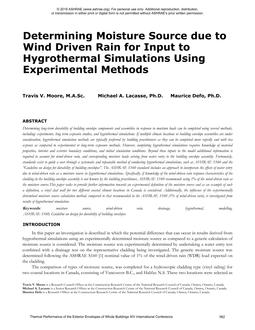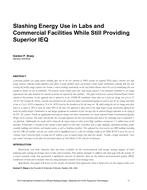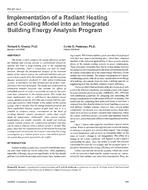One of the more powerful benefits of using computer simulation in the process of designing buildings is the ability to try ideas that may not appear feasible on the surface but could potentially have some merit. This is especially true when investigating the energy consumption of buildings—computer simulation allows the architect and engineer to reasonably predict the energy consumption of a particular building and attempt to increase its efficiency or apply a particular technology to the design without actually constructing the building. Thus, ideas can be tried in the computer laboratory and results can fine tune the design and lead to more informed decisions and an integrated design process. One area where simulation has somewhat lagged available technology is radiant heating and cooling systems. Until recently, a radiant system model within a comprehensive energy analysis program that compares the results on the basis of equivalent thermal comfort with conventional forced air systems has not existed. With the release of the new U.S. Department of Energy building energy analysis program in April 2001, this has been partially resolved. Recent improvements to the program include the ability to link a radiant system directly to a cooling tower rather than a chilled water line. The focus of this study is the discussion of this improvement to the simulation program and a demonstration of how this technology might be used to reduce cooling costs in several climates, including those in which such a strategy would typically be dismissed.
Units: Dual
Citation: Symposium, ASHRAE Transactions, vol. 109, pt. 2, Kansas City, 2003
Product Details
- Published:
- 2003
- Number of Pages:
- 9
- File Size:
- 1 file , 310 KB
- Product Code(s):
- D-20871


